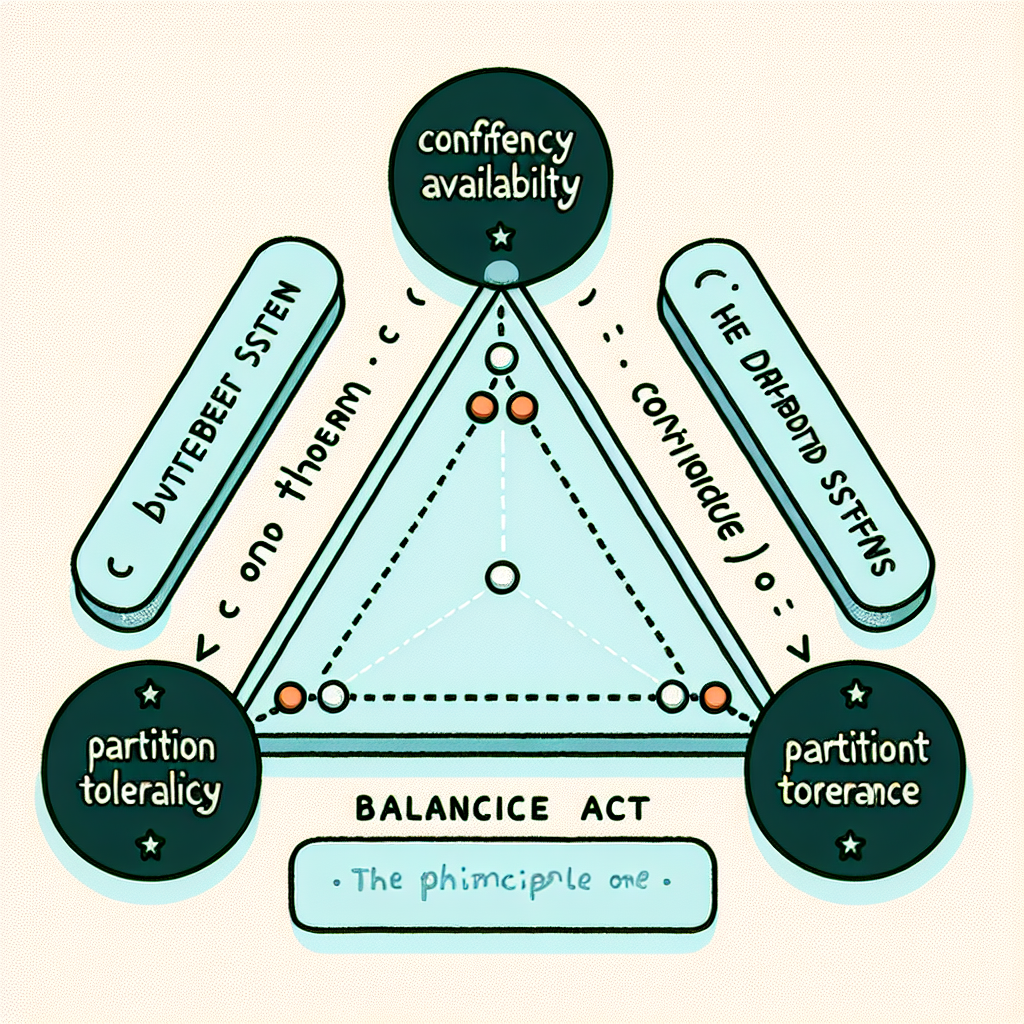Understanding the CAP Theorem - The Balancing Act of Distributed Systems

In the world of distributed systems, achieving consistency, availability, and partition tolerance simultaneously is a challenging task. The CAP theorem, formulated by computer scientist Eric Brewer in 2000, explores the inherent trade-offs involved in designing and operating such systems. In this blog post, we'll delve into the CAP theorem, its key concepts, and the implications it has on distributed system design.
Understanding the CAP Theorem
The CAP theorem states that in a distributed system, it is impossible to simultaneously guarantee three fundamental properties: consistency (C), availability (A), and partition tolerance (P). Here's a breakdown of each aspect:
-
Consistency (C): Consistency refers to all nodes in a distributed system having the same data at the same time. In other words, when a client reads data, it will always receive the most recent and up-to-date version. Achieving strong consistency can be desirable for certain applications, especially those involving financial transactions or critical data.
-
Availability (A): Availability implies that every request made to a distributed system must receive a response, regardless of the state of the system. Even if some nodes fail or experience network issues, the system should continue to respond to requests and provide an acceptable level of service. High availability is crucial for systems that prioritize responsiveness and must handle a large volume of user requests.
-
Partition Tolerance (P): Partition tolerance addresses the system's ability to continue functioning even when network partitions occur, causing communication failures between different parts of the system. Network partitions can happen due to various reasons, such as hardware failures, network congestion, or software issues. A system that is partition-tolerant can sustain the loss of network connectivity and still operate correctly.
The Trade-offs
The CAP theorem asserts that when a distributed system faces a network partition (P), system designers must choose between consistency (C) and availability (A). In other words, it is not possible to simultaneously achieve strong consistency and high availability during a partition.
When choosing between C and A, there are two main consistency models to consider:
-
Strong Consistency: Systems that prioritize strong consistency require all nodes to agree on the order and validity of updates before responding to any read requests. Achieving strong consistency often involves coordination mechanisms that introduce latency and increase the chances of unavailability during network partitions.
-
Eventual Consistency: Eventual consistency relaxes the requirements of strong consistency and allows for temporary inconsistencies between nodes. Nodes can diverge during a partition but are eventually brought back into consistency as the network partition is resolved. Eventual consistency favors availability over immediate consistency and is commonly used in systems where scalability and responsiveness are crucial.
Real-World Examples
Several popular distributed systems embody different trade-offs within the CAP theorem:
-
Relational databases: Traditional relational databases typically prioritize consistency over availability. When network partitions occur, they may choose to pause or stall operations until consistency is restored, thereby sacrificing availability.
-
NoSQL databases: Many NoSQL databases, such as Apache Cassandra, favor availability over strong consistency. They are designed to handle large-scale distributed environments and partition tolerance while providing high availability and eventual consistency.
-
Amazon DynamoDB: DynamoDB, a managed NoSQL database by Amazon, exemplifies the AP trade-off. It favors availability and partition tolerance, allowing users to read and write data with low latency, but eventual consistency may result in temporarily inconsistent data during network partitions.
Conclusion
The CAP theorem serves as a crucial guideline for understanding the trade-offs involved in designing distributed systems. System architects and developers must carefully consider the specific requirements of their applications and weigh the importance of consistency, availability, and partition tolerance to make informed design choices.
While the CAP theorem offers valuable insights, it's worth noting that recent research and advancements have explored relaxing its assumptions and introducing new consistency models. These developments, along with emerging technologies like consensus algorithms and distributed databases, continue to push the boundaries of what is achievable in distributed system design, offering exciting possibilities for future innovations.